Six Hidden Reasons Why This Mandala Drawing is Very Powerful
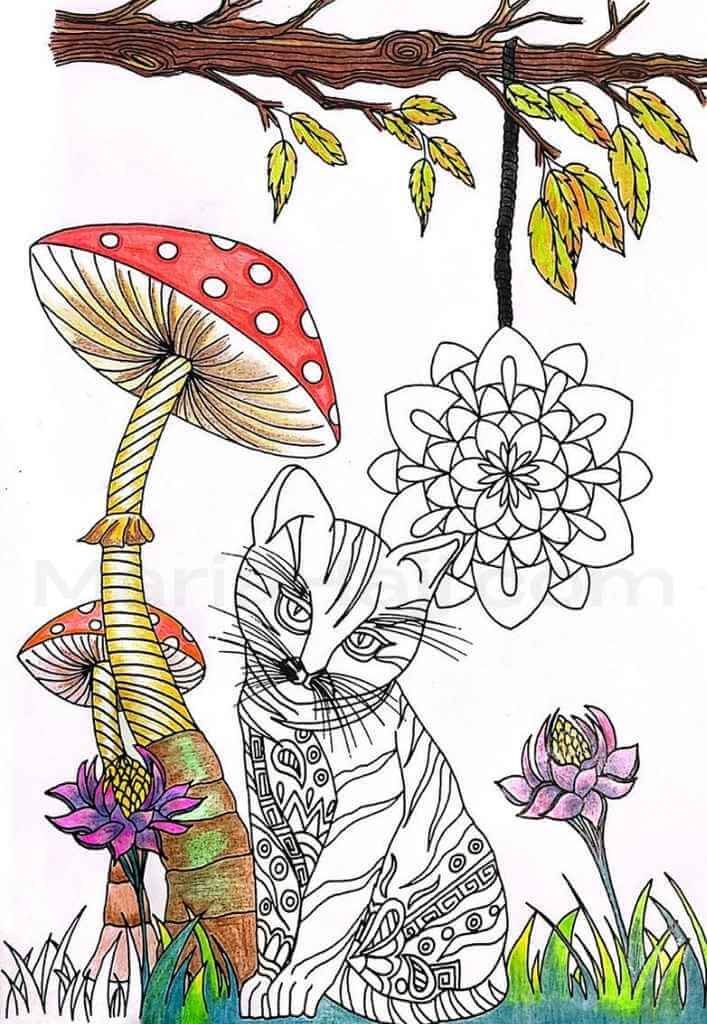
This mandala drawing is more than just a beautiful piece of art. It tells a story, carries energy, and invites the person coloring it to slow down, take a deep breath, and enjoy the moment.
At first glance, this drawing is full of details.
But when you take a closer look, you start to see how each element connects with the others. Every line, every pattern, and every shape plays a role in creating a harmonious balance.
Let’s go on a journey through this mandala drawing and explore what each part represents. We’ll also see how coloring it can impact emotions, focus, and overall well-being.
I, also, invite you to check the coloring book from which this drawing is taken from: The Friendly World of Animals
Let’s Explore the Six Powerful Aspects of this Mandala Drawing
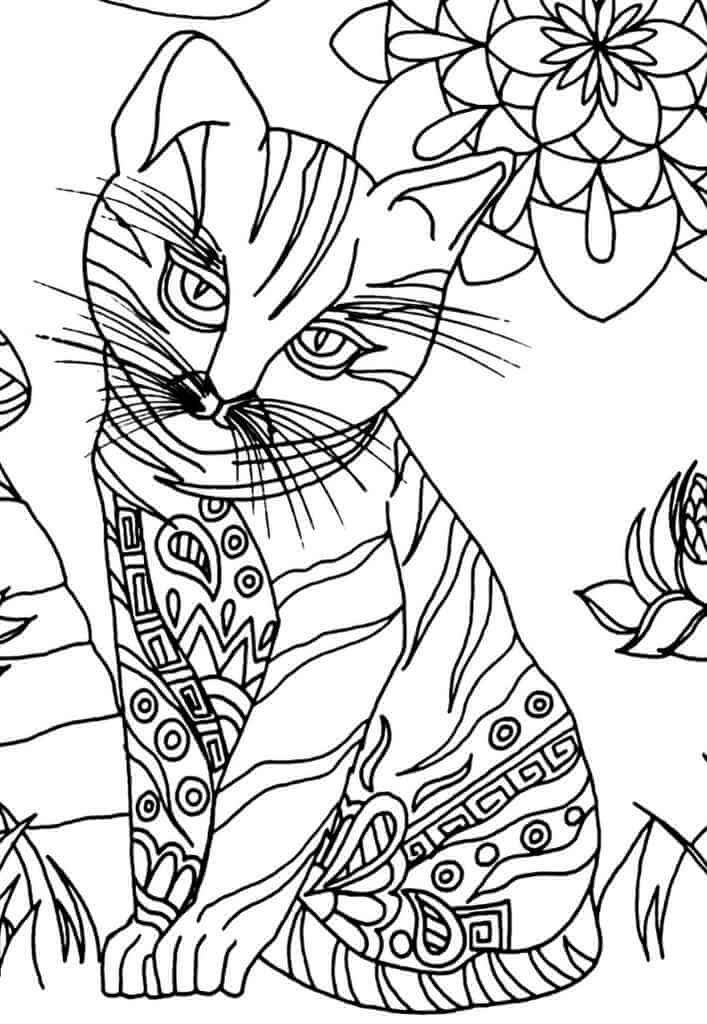
Aspect 1: The Cat- A Symbol of Mystery and Independence
Right at the center of this mandala drawing, we see a cat. And not just any cat—this one has a calm, knowing expression, almost as if it understands something we don’t.
Cats are often seen as symbols of independence, mystery, and intuition. They walk through life gracefully, making their own choices and following their instincts. This cat, with its intricate patterns, brings a sense of wisdom and self-awareness to the drawing.
Coloring the cat can be a very personal experience. Since it is the focal point of the mandala drawing, it naturally grabs attention. The person coloring it might spend extra time deciding which colors to use. They might choose warm colors to create a feeling of comfort or cool colors to reflect a sense of mystery.
Each pattern within the cat’s fur adds an extra layer of creativity. These details encourage patience and focus, making the coloring process feel like a gentle meditation. The more time spent coloring these patterns, the more relaxed the mind becomes.
And let’s not forget the cat’s eyes! They seem to hold a quiet strength, don’t they? Perhaps they remind the colorist to trust their instincts and embrace their own inner wisdom.
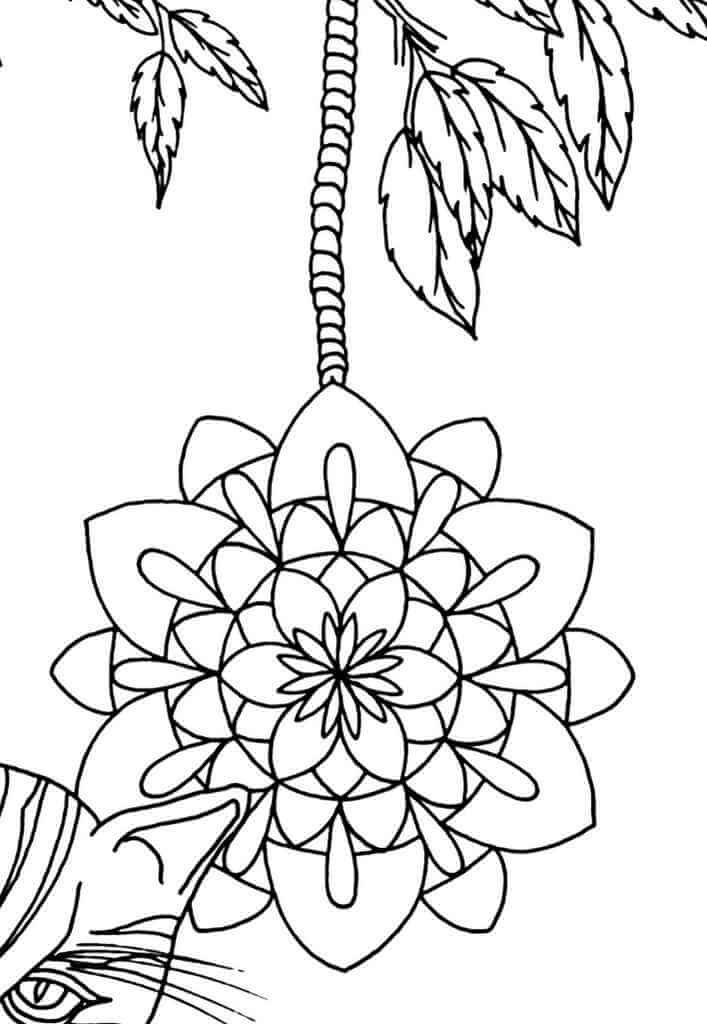
Aspect 2: The Flower Mandala – A Symbol of Balance and Harmony
Just behind the cat, there is a stunning mandala flower. This element is particularly interesting because it brings a sense of balance to the entire drawing.
Mandalas, in general, represent harmony, wholeness, and inner peace. Their symmetrical designs create a natural feeling of stability. That’s why many people find coloring mandalas so soothing—it’s like bringing order to chaos, one shape at a time.
This mandala flower is no exception. Its layered petals radiate outward, almost like ripples in water. The person coloring it might find themselves instinctively choosing colors that reflect their mood. Bright, bold colors could bring energy, while soft, pastel shades could evoke a sense of calm.
As they move from the center of the mandala outward, they might feel a gentle shift in their own energy. The repetitive patterns encourage deep focus, helping to quiet the mind and bring a sense of presence.
So, whether someone colors this part first or saves it for last, it will likely become a central part of their coloring journey.
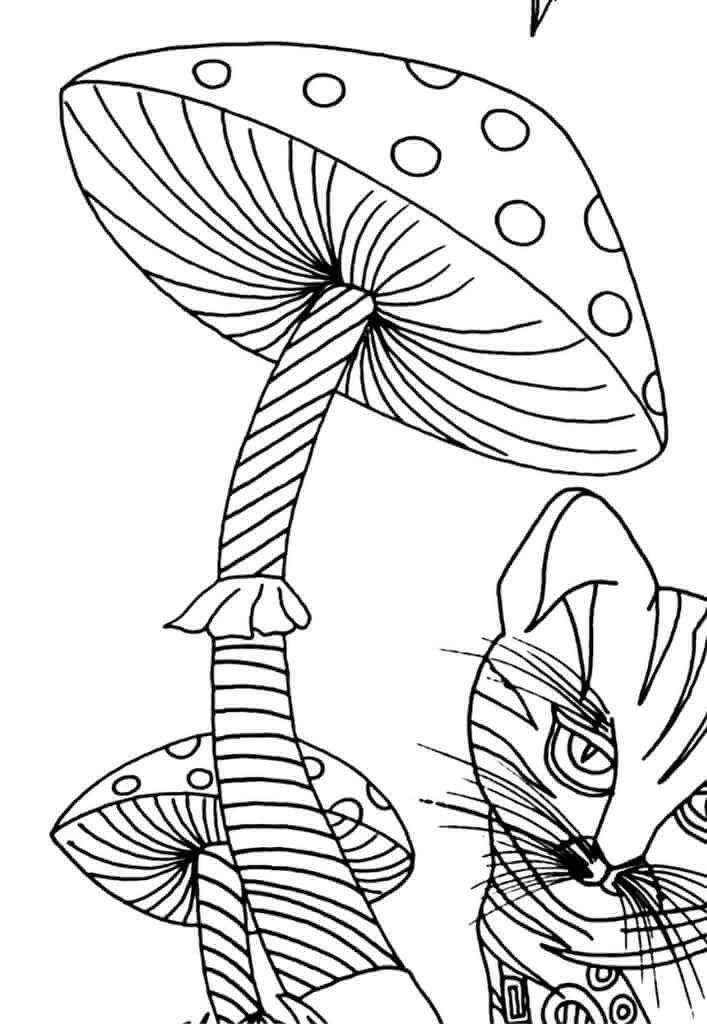
Aspect 3: The Mushrooms- A Playful Touch
To the left of the cat, we see large, enchanting mushrooms. Their oversized caps and spotted patterns add a playful element to the mandala drawing.
Mushrooms symbolize growth, transformation, and even a bit of magic. They remind us of the hidden wonders of nature—how things can flourish in unexpected places.
Coloring these mushrooms can feel like stepping into a fairytale. The person might choose bright reds and oranges for a bold, striking look. Or they might opt for soft blues and purples for a dreamy, mystical effect.
Unlike the structured mandala flower, the mushrooms feel free and organic. They encourage creativity and playfulness, making them a perfect section for anyone who wants to let go and have fun with colors.
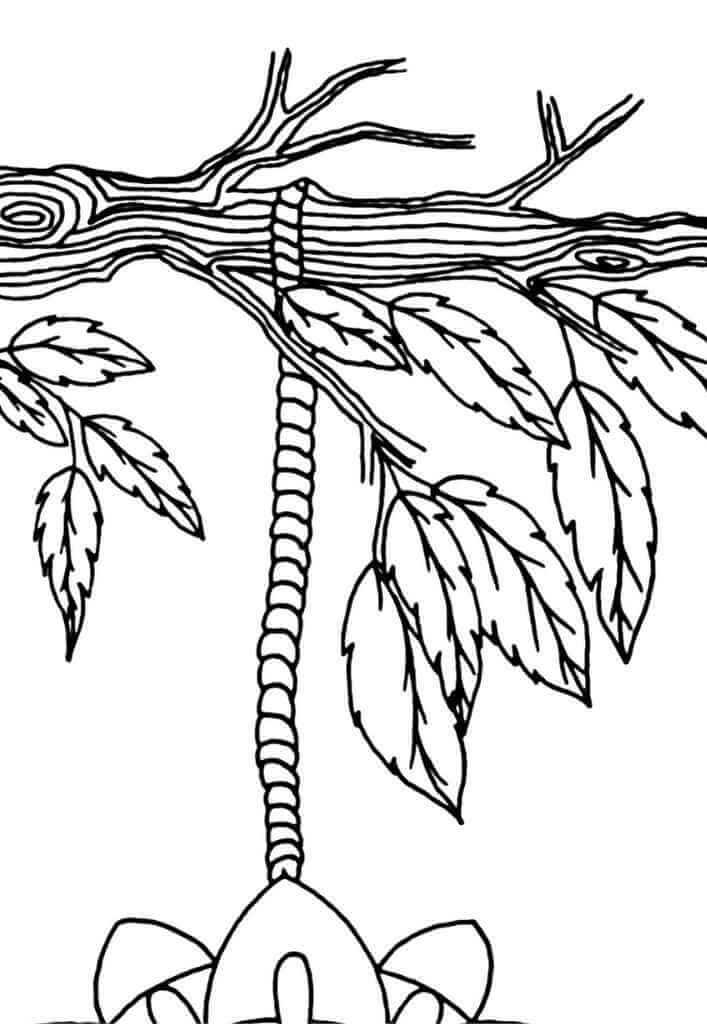
Aspect 4: The Tree Branch- A Connection to Growth and Strength
Above the cat, a sturdy branch stretches across the page. Its twisting, textured form contrasts beautifully with the smooth, rounded elements of the mandala and mushrooms.
Branches represent growth, resilience, and the passage of time. They remind us that life is always moving forward, even when we don’t notice it.
Coloring this part of the mandala drawing can be a grounding experience. The detailed texture of the bark allows for interesting color variations. The leaves, hanging gently from the branch, add a sense of movement and life.
So, someone coloring this section might feel a quiet sense of stability, as if they are connecting to the roots of something strong and unshakable.
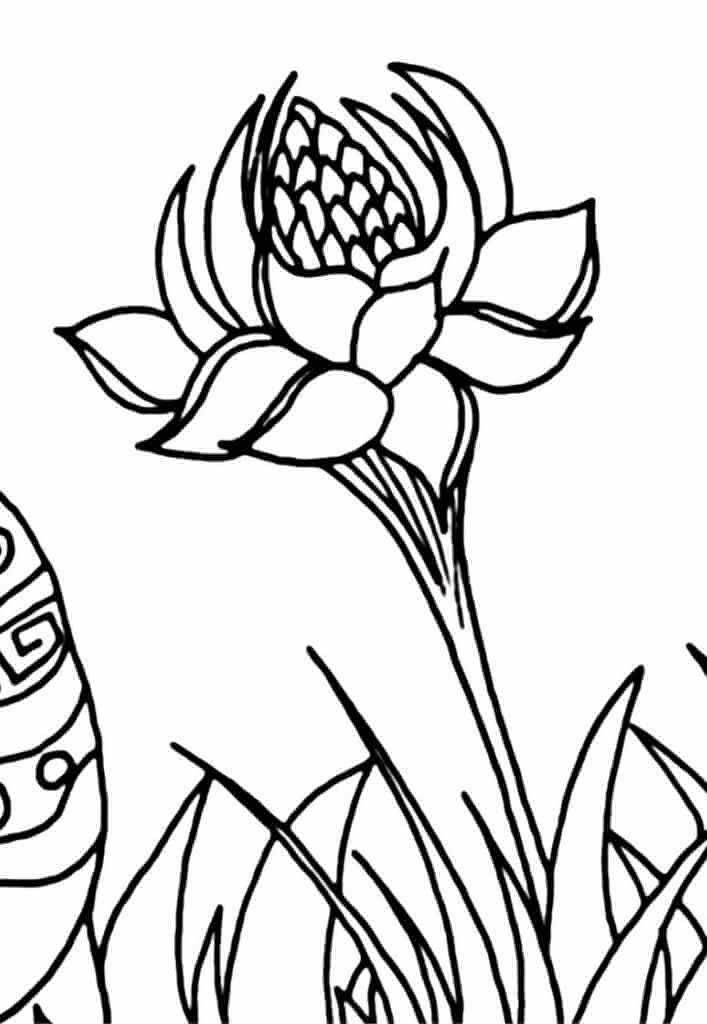
Aspect 5: The Lotus-Like Flowers: A Symbol of Transformation
Near the bottom of the drawing, we see delicate flowers blooming in the grass. Their shape is reminiscent of lotus flowers, which carry deep spiritual meaning.
Lotuses grow in muddy water, yet they rise above it, clean and untouched.
In fact, this makes them powerful symbols of transformation, resilience, and enlightenment.
Additionally, coloring these flowers can be a deeply personal experience. They remind us that no matter where we come from or what challenges we face, we have the ability to grow and bloom.
Moreover, the petals offer a great opportunity to play with gradients and blending. Light-to-dark shading can create a stunning effect, symbolizing growth and evolution.
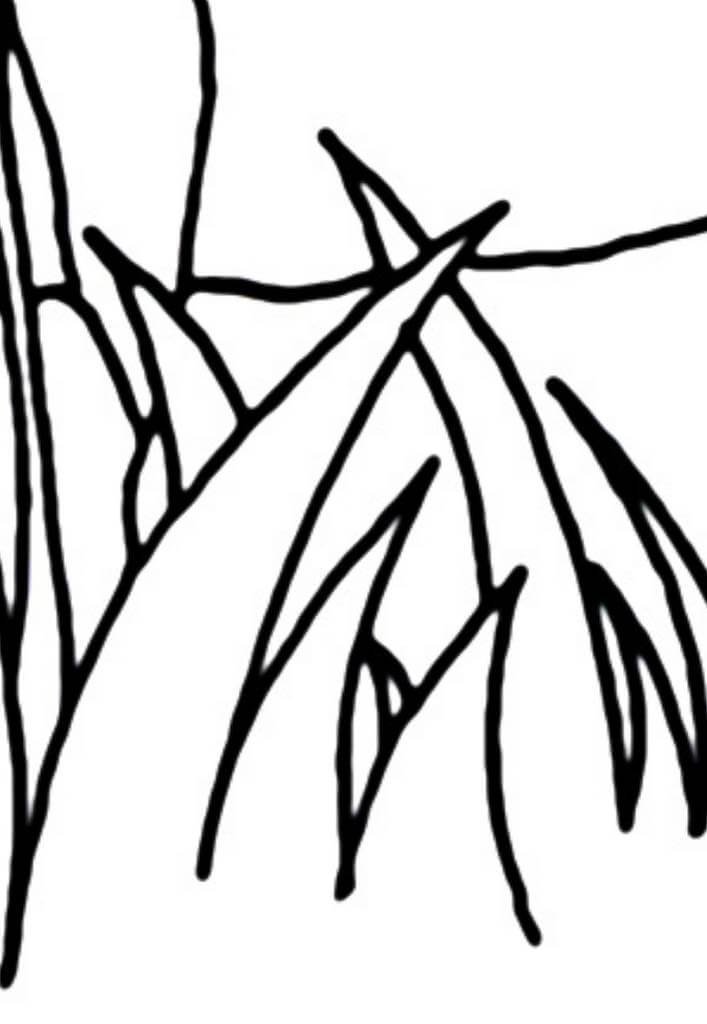
Aspect 6: The Grass- A Simple Yet Powerful Foundation
At the very bottom of the mandala drawing, we see blades of grass gently curving in different directions. It might seem like a small detail, but it plays an important role.
Grass represents stability and connection to the earth. It reminds us to stay grounded, no matter how much we dream or explore.
Coloring this section can be a soothing way to complete the drawing.
It doesn’t require much thought, which makes it a great moment for quiet reflection. Some might use different shades of green to create depth, while others might add hints of yellow or blue for an artistic touch.
No matter how it’s colored, this final section brings everything together, completing the journey of the drawing.
The Overall Experience: A Journey Through Creativity and Mindfulness
Now that we’ve explored every aspect, it’s easy to see why this mandala drawing is so special. It blends structure with creativity, calmness with playfulness, and detail with simplicity.
Each of the six aspects offers something unique:
- At first, the mandala flower brings balance and peace.
- Then the cat encourages independence and intuition.
- In addition, the mushrooms invite creativity and fun.
- The tree branch, however, symbolizes growth and strength.
- The lotus-like flowers represent transformation.
- And finally, the grass provides stability and grounding.
Together, these aspects create a powerful mandala drawing that invites the colorist into a world of relaxation and self-expression.
Four Tips for Coloring This Mandala Drawing
Coloring a mandala is more than just filling in spaces, it’s actually a way to relax, express creativity, and enjoy the moment.
But where should you start?
And how can you make your mandala drawing look even more beautiful?
I will answer you questions in four simple steps:
- First, consider starting with what feels right to you. So, some of you might begin with the mandala flower to experience the essence of meditation. Others might choose the mushrooms for a fun, playful start.
- Choose colors based on emotion. Soft, muted tones can create a calming effect, while bold, vibrant hues can bring energy and excitement.
- Additionally, consider taking breaks and enjoying the process. This drawing is detailed, which means it’s okay to color it over multiple sessions. So, each time, it will bring you a new feeling or inspiration.
- Experiment with shading and blending. This can add depth and dimension, making the final piece even more captivating.
By the time the coloring is complete, this mandala drawing will not just be a beautiful artwork—it will be a reflection of emotion, creativity, and mindfulness.
So, grab your favorite colors, take a deep breath, and enjoy every moment of this journey. And remember to share your coloring with me on Instagram!
If you love this experience, why not explore more? My mandala books on Amazon are filled with beautiful designs to help you relax and unwind. Each page is a new adventure, perfect for stress relief and creative fun. No need to be an artist—just color, enjoy, and let your imagination flow.
Start your mandala journey today and find the perfect book for you!